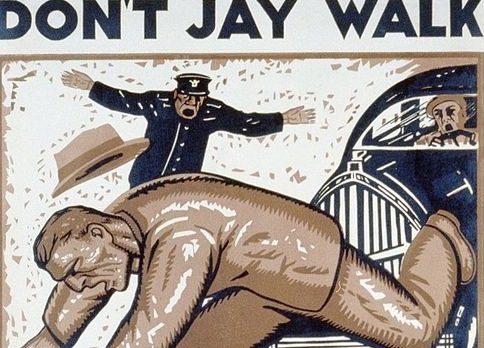Neurobiological Clues to Advertising Effectiveness
This is one of our free-to-access content pieces. To gain access to all Ideas for Leaders content please Log In Here or if you are not already a Subscriber then Subscribe Here.

Recent research identifies physiological reasons that public service announcements (PSAs) are effective. Specifically, the researchers show that increases in two neurochemicals — adrenocorticotropic hormone and oxytocin — result in greater attention and action from viewers.
The AIDA model of advertising identifies Attention, Interest, Desire and Action as key to the effectiveness of an advert. In order to measure the physiology behind advertising effectiveness, a research team used experiments involving public service announcements (PSAs) and focused specifically on the attention and action components of the model.
PSAs are good foundations for these kinds of experiments because there is a direct action (a donation) that follows the airing of the announcement. It is easier to determine if the PSA was effective.
In order to be effective, PSAs must do two things: grab the attention of the viewer, and push the viewer to take action. Advances in neuroscience have identified the presence of adrenocorticotropic hormone (ACTH) as a neurological catalyst to attention, and the presence of oxytocin (OT) as a neurological catalyst to empathy. Empathy, in the context of a PSA, would be expected to lead to action (a donation). The researchers thus hypothesized that increases in these two neurochemicals would lead to more effective PSAs. They summarized their argument in a Physiologic Model of Effective PSAs (PMEP). In the PMEP, viewing a public service announcement leads to two outcomes: the viewer does not pay attention to the ad or, because of an increase in ACTH, pays attention to the ad. For the viewer who pays attention, according to the model, there are two further outcomes: the viewer does not respond to the ad, or, because of increase in OT, responds to the ad (in the case of a PSA, makes a donation).
To test the PMEP model, the researchers conducted two experiments. In the first experiment, a group of participants were given OT, while another group were given a placebo. They were then asked to watch 16 PSAs and decide to which cause they wanted to contribute, and how much.
In the second experiment, the blood of participants was tested before and after they watched a single PSA to determine if there were increases in ACTH and OT.
The results of the experiments were unequivocal. In the first experiment, after watching 16 PSAs, participants who had received the oxytocin donated to 57% more causes, donated 56% more money, and reported 17% greater concern for those in the announcements than the participants who had received the placebo. In the second experiment, those who showed an increase in both ACTH and OT after watching the PSA gave 261% more than those whose levels of both ACTH and OT had not increased.
How can physiology help companies and their marketers? Research has shown that activities ranging from being trusted and being touched to petting the dog, holding one’s infant, attending a wedding, and engaging in sexual activity all raise OT levels.
The good news for advertisers is that the brain does not distinguish between in-person OT triggers and triggers communicated through visual media. Thus, advertisements or public service announcements that feature the trigger activities described above will increase OT levels and, consequently, be more effective in generating the desired action. For example, an advertisement for a body lotion could be more effective if the commercial shows the lotion being spread on one’s skin by another person instead of simply showing the body lotion bottle.
The role of emotions is key. Even watching an emotional video clip is enough to raise OT levels in a person. Thus, both advertisements and in-person marketing campaigns should be focused on building emotional connections with customers.
One important revelation of the research is that one size does not fit all. Even with increased levels of OT, participants did not donate to every charity they saw featured in the PSAs. The OT triggers described above vary based on gender and other factors. There is no simple recipe, even when one understands the neurobiology of effective advertisement. Marketers still have to continue to segment customer bases, and advertisements still have to be crafted with nuance and skill.
The researchers caution that the experiments focussed on PSAs. Further research will be needed to confirm that what makes public service announcements grab a customer’s attention and push him or her to action can be applied to advertisements with a different agenda.

Ideas for Leaders is a free-to-access site. If you enjoy our content and find it valuable, please consider subscribing to our Developing Leaders Quarterly publication, this presents academic, business and consultant perspectives on leadership issues in a beautifully produced, small volume delivered to your desk four times a year.

For the less than the price of a coffee a week you can read over 650 summaries of research that cost universities over $1 billion to produce.
Use our Ideas to:
Speak to us on how else you can leverage this content to benefit your organization. info@ideasforleaders.com